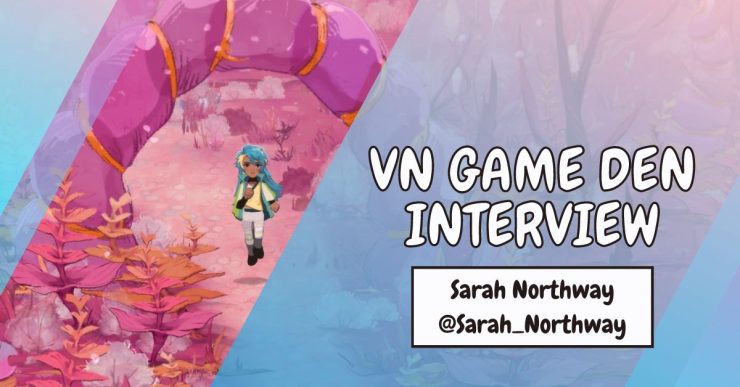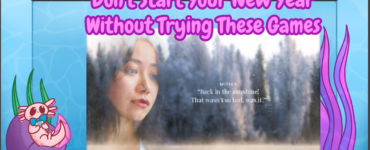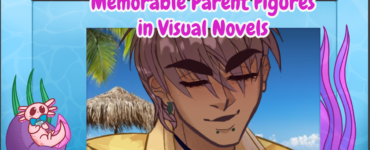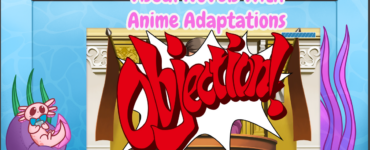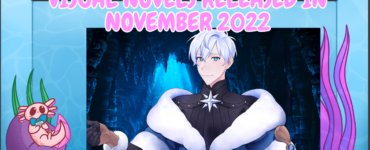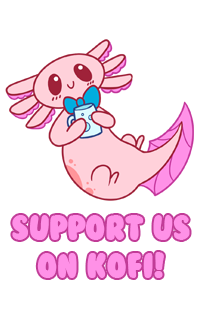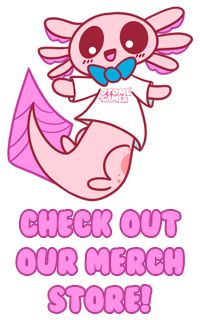Sarah Northway is an indie game developer who runs Northway Games. The studio was originally founded by Sarah and her husband, Colin. The pair started making games under the company name in 2010 and have released games like the Rebuild series, the pair’s game Deep Under the Sky, and Incredipede. Since 2016, Sarah ran the company by herself and has released a brand new title, I Was a Teenage Exocolonist, an RPG visual novel hybrid with card-based battlers. We sat down with Sarah to learn more about her career in game development, what it’s like to run her own studio and how she decides to run it compared to AAA companies, and I Was a Teenage Exocolonist.
Please tell our readers a little bit about yourself and how you got into game development!
I’m Sarah Northway, co-founder of Northway Games and the designer, coder, co-writer and lead creative on I Was a Teenage Exocolonist. I spent most of my own teens playing video games, and modding and making small games for fun. When I graduated in 2001, joining the games industry seemed to mean crunching long hours at EA Sports as a small cog working on some corner of the menu system for FIFA. Instead, I worked chiller gigs as a web programmer and kept making games in my spare time.
When Flash browser games finally made self-publishing easy, my husband and I went indie to start Northway Games and share our creations with the world. We’re both designer/programmers with different tastes in games, so we don’t often work together. Instead we collaborate with different artists on each project, so every Northway Games game has a unique visual style. Colin spun off a VR art gallery called the Museum of Other Realities in 2017, at the same time I was starting I Was a Teenage Exocolonist.
You mentioned that you started going indie after leaving EA Sports. So many negative aspects like crunch is, unfortunately, a normalized part of AAA game development. When you went indie, what was the approach you had in terms of leadership so those you worked with had a much more fun and chiller experience when making games for Northway Games?
I never actually took that job at EA, I just witnessed friends working there and at other big games studios and it did not appeal to me at all, mainly the part about having no creative control, and no time for my own projects during crunch. I’m personally quite happy to work absurdly long hours on my own games (I average 50-60 hours a week), but I would never ask this of the people I work with.
I prefer to collaborate with contractors who set their own schedules and have their own creative projects on the go. Most of Exocolonist’s team worked part time 10-20 hours a week, giving them time to pursue other contracts or personal work. I’ve tried to encourage and be open to any creative suggestions from all team members, and to allow collaborators to choose which aspects of the game they want to be involved with. I try to personally handle un-fun tasks and rote work myself so others can focus on the creative things they do best.
During the early days of Northway Games, what were some of the things you learned heading your own game studio? Any obstacles that you would like to talk about that you could perhaps give insight to future game devs?
Self-motivation is absolutely key to any kind of self-employment, and there have been times, especially in the early days of Northway Games, that I had trouble finding the motivation to work, or in motivating others to work. Setting schedules and deadlines can be helpful, even if they seem completely arbitrary. And so is finding ways to love the work that you do. If you can, it’s great to use a variety of skills, so you can switch up what you’re working on when you start to get bored.
For example, my co-writer Lindsay released regular updates on two beautifully-drawn personal comics (https://motherlovercomic.com and http://howbabycomic.com) while also writing our massive narrative. And I genuinely enjoyed relaxing with some of that aforementioned un-fun rote work after a day of difficult programming or narrative design.
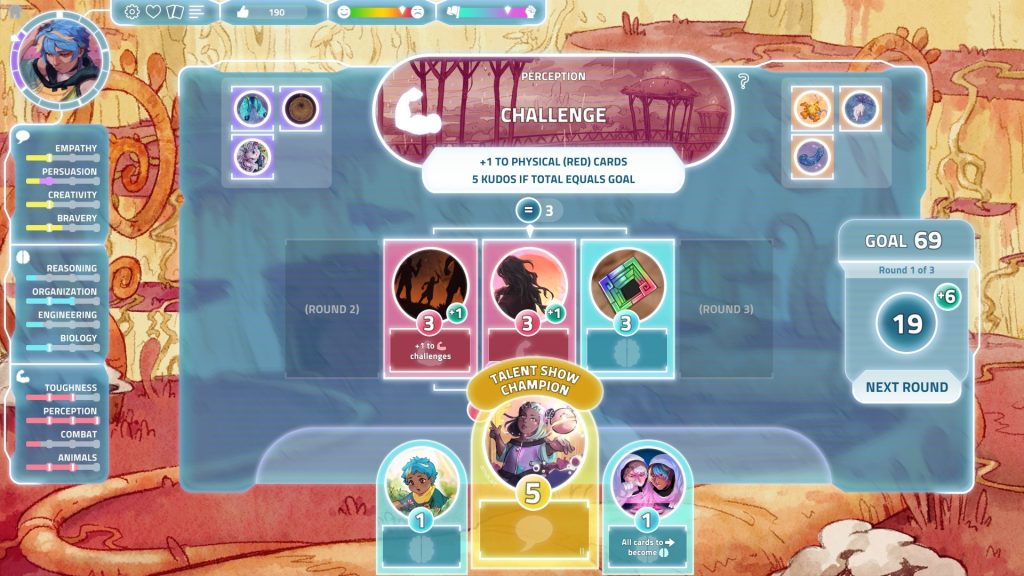
In I Was A Teenage Exocolonist, you play as a 10-year-old kid who arrives on a planet, which is full of life and promise for everyone in the colony. Though, the tone of the game changes as the main character grows up and realizes how dangerous and cruel the world can be. How did you and the rest of the team come up with the concept for I Was a Teenage Exocolonist? Were there any particular influences for the game’s creation?
I love life sims like the Japanese Princess Maker series from the 90s, it was a big influence. And I’m a fan of science fiction and horror (my Rebuild game series takes place during a zombie apocalypse). So the idea of kids growing up while trying to cope with / prevent hardships on an alien planet just kind of fit.
The game features a very in-depth romance system. Not only are there numerous characters you can date, but they all have their own preferences (i.e. monogamy vs polyamory, wanting children vs not wanting them) and these characters can actually break up with you if they die or if your wants/needs don’t align with theirs. It’s unique compared to other dating sims where these elements are often ignored and the player can do whatever they want. Why did you go this route with the game’s relationships?
Honestly, I don’t like when dateable characters seem to just be waiting for you to notice them, like they have no agency to actually tell you no. It feels uncomfortably entitled and the wrong lesson to teach about real-world relationships. I acknowledge that dating sims, like most games, are not supposed to model real life, but I didn’t intend for Exocolonist to be a dating sim. I wanted relationships to fit into the greater narrative and feel natural, or even be a bit of a puzzle to get right.
During development it became clear that the dateable characters were going to be a huge draw for players, so I hired co-writer Lindsay Ishihiro, who has a knack for romance writing. They convinced me to drop some of my less accessible ideas (I was going to give them all sexual preferences, political preferences, and make one of them a creepy stalker). Instead Lindsay added layers of realness and emotional sensitivity to all the characters and relationships, perfectly portraying a variety of different ways to fall in love.
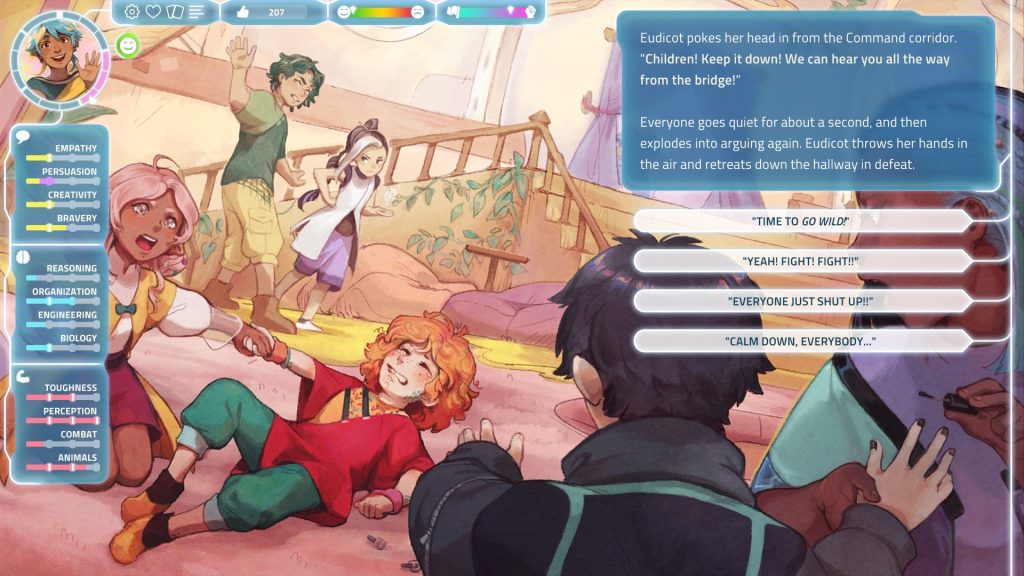
What were some of the struggles that you and the team faced during development? How did you get over those obstacles?
For various reasons we ended up with a lot of different artists working on the game for varying lengths of time. It was sometimes tricky to keep a coherent style across all the parts of our 2d and 3d scenes and menus. Artists Meilee Chao, Eduardo Vargas and others worked hard to match styles and help each other and me put it all together.
Then we took a sharp left by hiring 100 artists to draw art for the cardgame in their own styles (which turned out great!).
Likewise our soundtrack features 14 different artists, and it was tricky to come up with tracks that would be appropriate for all the different emotional range this game has, but still have some sort of consistency across it all. I’m very happy with how it turned out.
The game received some promotion from PlayStation’s Twitter and their blog. That’s amazing! How was the reaction to the game being featured and can you give any advice to developers who are looking to form connections with big companies like PlayStation?
I have to hand this one to our publisher Finji, and to the fine folks at Sony who support and believe in games like Exocolonist and want to make a place for them on the PlayStation platform.
I Was a Teenage Exocolonist is a game with a lot of replay value as it has 29 endings! Not only that, but there’s so many different paths you can take with the different characters you can interact with, the skills you can level up, and the choices you can make. How in the world did the team manage it? What is your advice to anyone who wants to make a game with various outcomes and paths in it?
There was really no trick, Lindsay and I just seem to be wired to hold enormous (600,000 word!) narrative worlds in our heads all at once. Spreadsheets help. I roughed out the story/setting/characters/skills/jobs/etc in Google Sheets early on and let it percolate for a few years while I created the framework. I put all the content through several editing passes before blocking out the narrative events in our Exoscript scripting language. Then Lindsay wrote the events (which took 2000 hours!), and wrangled hundreds of world state variables (who’s alive, who’s in love, what do you remember from past lives). Finally, I did an editing pass and tested everything in the game.
Who is your favorite character in the game and why?
My fave is Dys, because he’s an introvert and a weirdo like I was as a teen. And I like him because we made him difficult to love. He lashes out at the colony and blames other people for his problems, and depending on how you interact with him, his story can get very, very dark as he gets older and veers towards violent rebellion. I hope people try to fix him, and find it frustrating that they can’t – they can only join him.
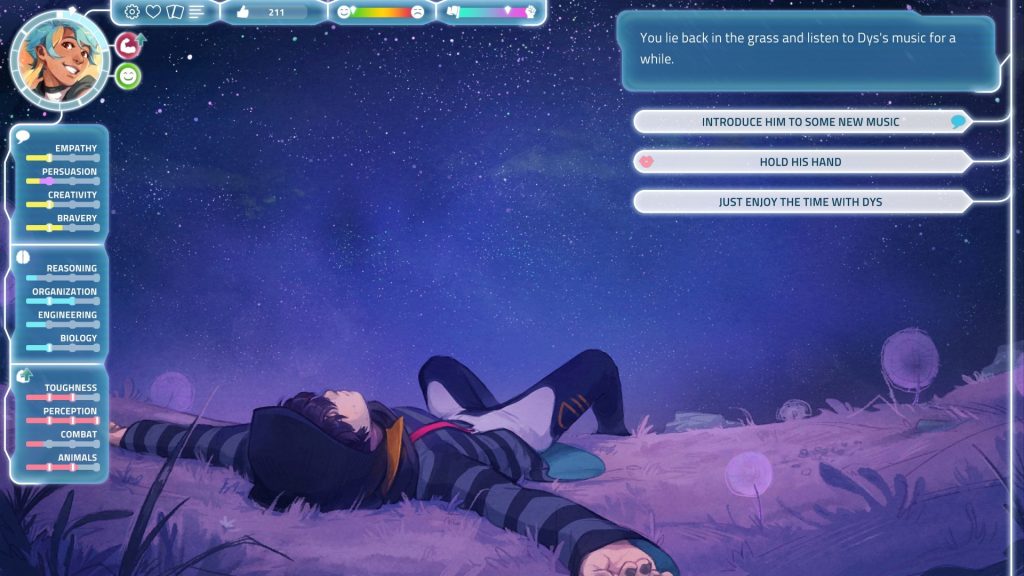
With I Was a Teenage Exocolonist out, what can our readers expect to see from you and the rest of the team at Northway Games?
I haven’t announced my next game yet, but I’ve started thinking about it! It MIGHT have something to do with zombies. First I need a day or two off. Or a month. 😀
If you would like to check out Sarah and follow her, you can check out her Twitter page here. If you want to keep up with Northway Games and their upcoming projects, we strongly recommend following the studio on Twitter. You can purchase I Was a Teenage Exocolonist on Steam, PlayStation, and Nintendo Switch for $24.99 USD.

